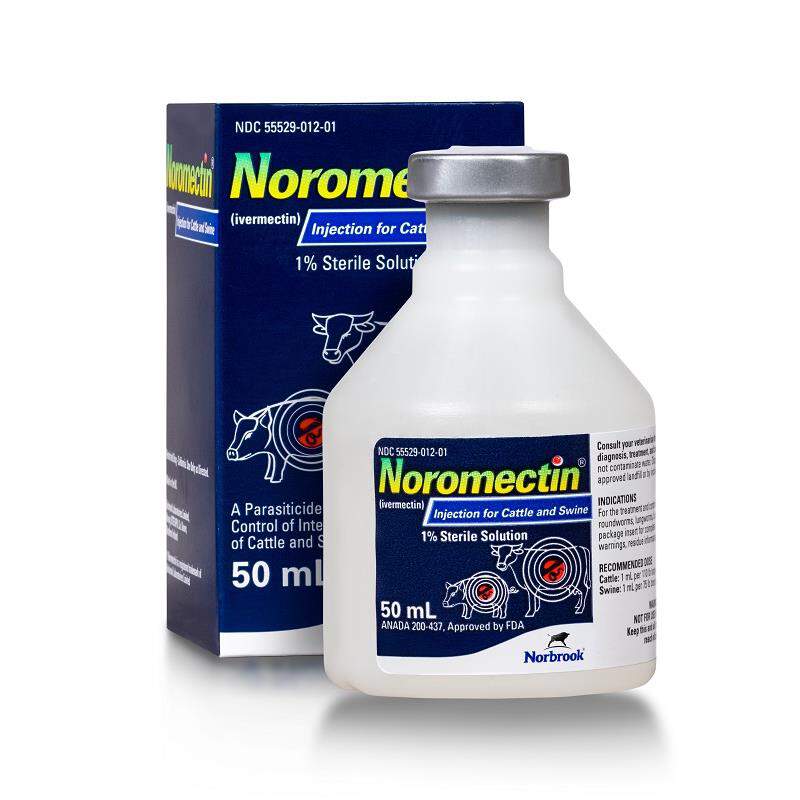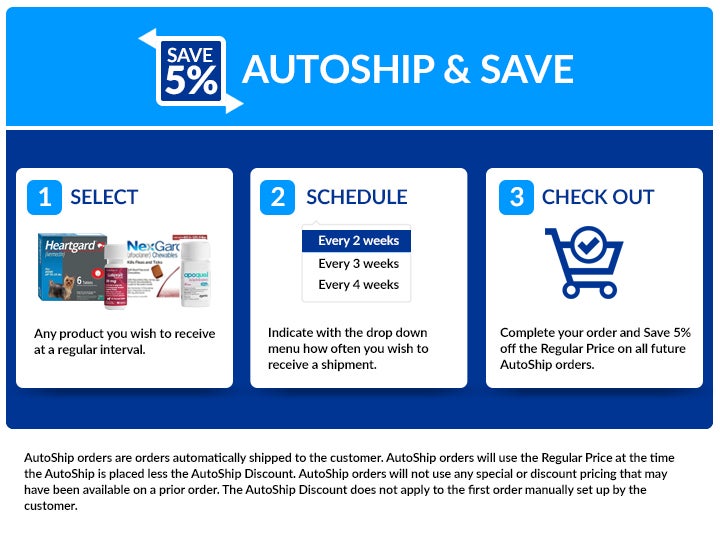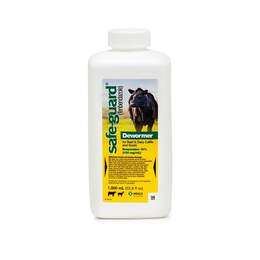

Click on image to open expanded view
Item No.
50994
Noromectin (Ivermectin 1%) Injection for Cattle and Swine

Availability:
-
In Stock
AutoShip & Save 20%
Size:
Product Description
Noromectin (1% Ivermectin) Injection for Cattle and Swine is an injectable parasiticide for cattle and swine. One low volume dose effectively treats and controls the following internal and external parasites that may impair the health of cattle and swine. In cattle : gastrointestinal roundworms (including inhibited Ostertagia ostertagi in cattle), lungworms, grubs, sucking lice, and mange mites. In swine : gastrointestinal roundworms, lungworms, lice, and mange mites of swine. Available in 50 ml, 250 ml, 500 ml and 1000 ml vials. (When using the 250, 500 or 1000 ml vials, use only automatic syringe equipment). *This product cannot be shipped to CA.
What is Noromectin (Ivermectin 1%) Injection for Cattle and Swine?
Noromectin (1% Ivermectin) Injection for Cattle and Swine is an injectable parasiticide for cattle and swine. In cattle it helps treat : gastrointestinal roundworms (including inhibited Ostertagia ostertagi in cattle), lungworms, grubs, sucking lice, and mange mites, and in swine it treats : gastrointestinal roundworms, lungworms, lice, and mange mites.
Who is Noromectin (Ivermectin 1%) Injection for Cattle and Swine for?
Cattle (Beef and Dairy), Swine, Bison and Reindeer
Why use Noromectin (Ivermectin 1%) Injection for Cattle and Swine?
-Highly effective for treatment and control of roundworms, lungworms, grubs, lice, and mange mites in cattle and swine.
-Sterile ready to go solution, no mixing required
How does Noromectin (Ivermectin 1%) Injection for Cattle and Swine work?
Ivermectin is a member of the macrocyclic lactone class of endectocides which have a unique mode of action. Compounds of the class bind selectively and with high affinity to glutamate-gated chloride ion channels which occur in invertebrate nerve and muscle cells. This leads to an increase in the permeability of the cell membrane to chloride ions with hyperpolarization of the nerve or muscle cell, resulting in paralysis and death of the parasite. Compounds of this class may also interact with other ligand-gated chloride channels, such as those gated by the neurotransmitter gamma-aminobutyric acid (GABA). The margin of safety for compounds of this class is attributable to the fact that mammals do not have glutamate-gated chloride channels, the macrocyclic lactones have a low affinity for other mammalian ligand-gated chloride channels and they do not readily cross the blood-brain barrier.
Manufacturer:
Norbrook
Active Ingredients(s):
1% Ivermectin
How is Noromectin (Ivermectin 1%) Injection for Cattle and Swine sold?
50 ml, 250 ml, 500 ml and 1000 ml vials (When using the 250, 500 or 1000 ml vials, use only automatic syringe equipment).
What are the side effects of Noromectin (Ivermectin 1%) Injection for Cattle and Swine?
Transitory discomfort has been observed in some cattle following subcutaneous administration. A low incidence of soft tissue swelling at the injection site has been observed. These reactions have disappeared without treatment. For cattle, divide doses greater than 10 mL between two injection sites to reduce occasional discomfort or site reaction. Reactions may be due to clostridial infection and should be aggressively treated with appropriate antibiotics.
What special precautions are there?
Keep away from children and animals. NOT FOR USE IN HUMANS. RESIDUE WARNINGS: Do not treat cattle within 35 days of slaughter. Because a withdrawal time in milk has not been established, do not use in female dairy cattle of breeding age. A withdrawal period has not been established for this product in pre-ruminating calves. Do not use in calves to be processed for veal. Do not treat swine within 18 days of slaughter. Clean, properly disinfected needles should be used to reduce the potential for injection site infections. Observe cattle for injection site reactions. If injection site infections are suspected, consult your veterinarian. This product is not for intravenous or intramuscular use. Noromectin Injection for Cattle and Swine has been developed specifically for use in cattle, swine, reindeer, and American bison only. This product should not be used in other animal species as severe adverse reactions, including fatalities in dogs, may result.
What to do if overdose?
Call your nearest emergency animal hospital
How can I store Noromectin (Ivermectin 1%) Injection for Cattle and Swine?
Store at 59° to 86°F (15° to 30 °C). Protect product from light.
Overview
Dosage :
Cattle: Noromectin Injection should be given only by subcutaneous injection under the loose skin in front of or behind the shoulder at the recommended dose level of 200 mcg of ivermectin per kilogram of body weight. Each mL of Noromectin Injection contains 10 mg of ivermectin, sufficient to treat 110 lb (50 kg) of body weight (maximum 10 mL per injection site).
Body Weight (lb) / Dose Volume (mL)
220 2
330 3
440 4
550 5
660 6
770 7
880 8
990 9
1100 10
Swine: Noromectin Injection should be given only by subcutaneous injection in the neck of swine at the recommended dose level of 300 mcg of ivermectin per kilogram (2.2 lb) of body weight. Each mL of Noromectin Injection contains 10 mg of ivermectin, sufficient to treat 75 lb of body weight.
Body Weight (lb) / Dose Volume (mL)
Growing Pigs
19 1/4
38 1/2
75 1
150 2
Breeding Animals
(Sows, Gilts, and Boars)
225 3
300 4
375 5
450 6
Administration
Cattle: Noromectin Injection is to be given subcutaneously only, to reduce risk of potentially fatal clostridial infection of the injection site. Animals should be appropriately restrained to achieve the proper route of administration. Use of a 16-gauge, 1/2 to 3/4 inch needle is suggested. Inject under the loose skin in front of or behind the shoulder (see illustration).
When using the 250, 500 or 1000 mL pack size, use only automatic syringe equipment.
Use sterile equipment and sanitize the injection site by applying a suitable disinfectant. Clean, properly disinfected needles should be used to reduce the potential for injection site infections.
No special handling or protective clothing is necessary.
Swine: Noromectin (ivermectin) Injection is to be given subcutaneously in the neck. Animals should be appropriately restrained to achieve the proper route of administration. Use of a 16- or 18-gauge needle is suggested for sows and boars, while an 18- or 20-gauge needle may be appropriate for young animals. Inject under the skin, immediately behind the ear (see illustration).
When using the 100, 250, 500 or 1000 mL pack size, use only automatic syringe equipment. As with any injection, sterile equipment should be used. The injection site should be cleaned and disinfected with alcohol before injection. The rubber stopper should also be disinfected with alcohol to prevent contamination of the contents. Mild and transient pain reactions may be seen in some swine following subcutaneous administration.
Recommended Treatment Program
Swine: At the time of initiating any parasite control program, it is important to treat all breeding animals in the herd. After the initial treatment, use Noromectin Injection regularly as follows:
BREEDING ANIMALS
Sows: Treat prior to farrowing, preferably 7-14 days before, to minimize infection of piglets.
Gilts: Treat 7-14 days prior to breeding.
Treat 7-14 days prior to farrowing.
Boars: Frequency and need for treatments are dependent upon exposure.
Treat at least two times a year.
Feeder Pigs
(weaners/growers/finishers)
All weaner/feeder pigs should be treated before placement in clean quarters.
Pigs exposed to contaminated soil or pasture may need retreatment if reinfection occurs.
NOTE:
(1) Noromectin Injection has a persistent drug level sufficient to control mite infestations throughout the egg to adult life cycle. However, since the ivermectin effect is not immediate, care must be taken to prevent reinfestation from exposure to untreated animals or contaminated facilities. Generally, pigs should not be moved to clean quarters or exposed to uninfested pigs for approximately one week after treatment. Sows should be treated at least one week before farrowing to minimize transfer of mites to newborn baby pigs.
(2) Louse eggs are unaffected by Noromectin Injection and may require up to three weeks to hatch. Louse infestations developing from hatching eggs may require retreatment.
(3) Consult a veterinarian for aid in the diagnosis and control of internal and external parasites of swine.
Main Ingredients
1% Ivermectin





